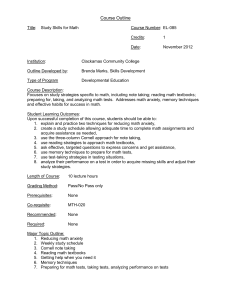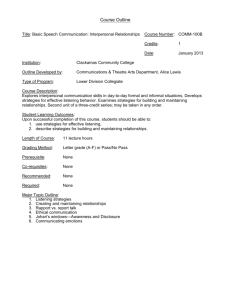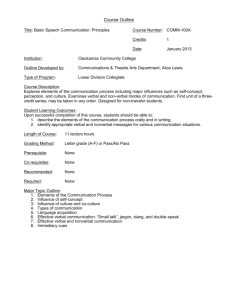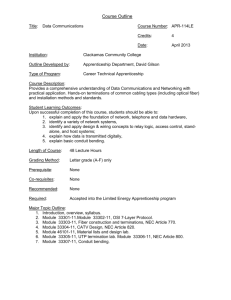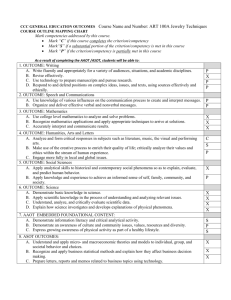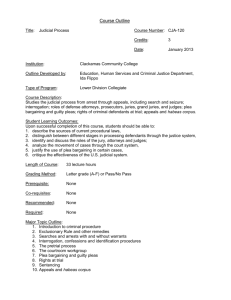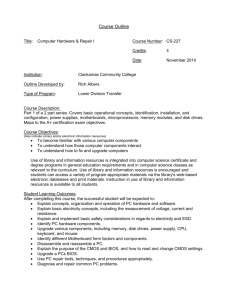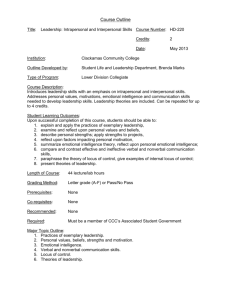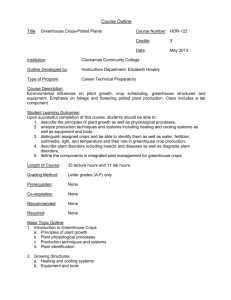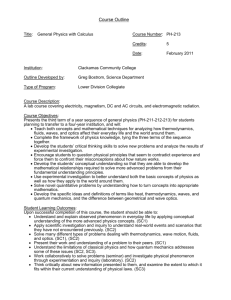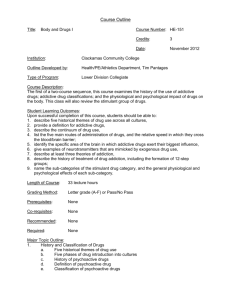Outline Update MA 110 Medical Terminology
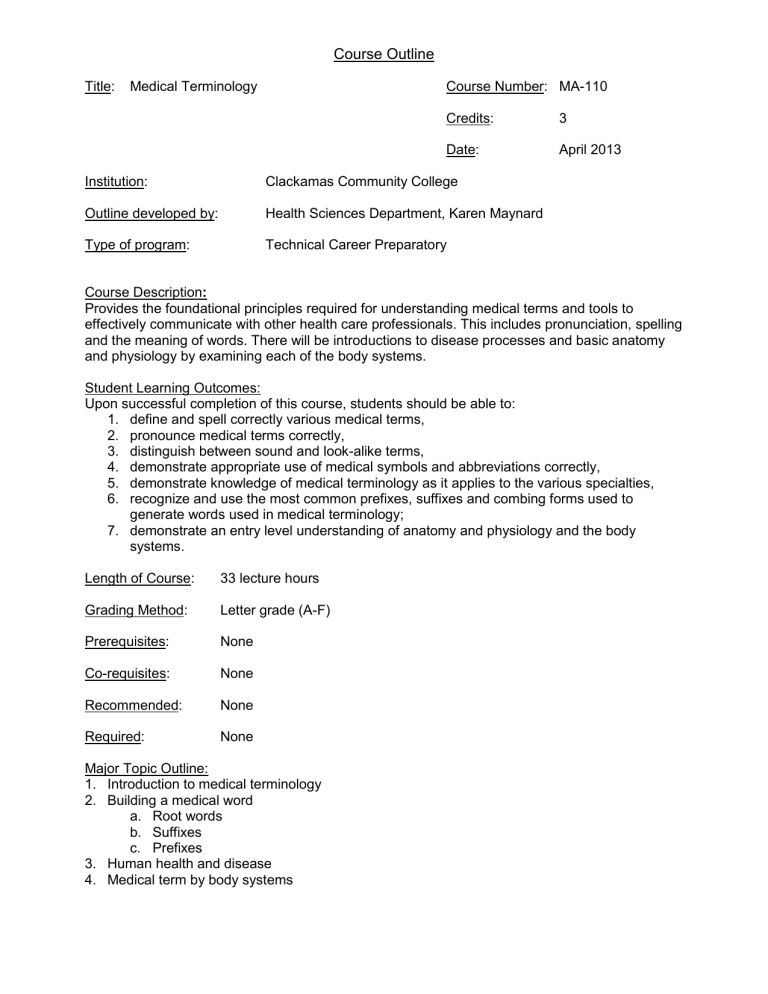
Course Outline
Title: Medical Terminology
Institution:
Course Number: MA-110
Credits:
Date:
Clackamas Community College
3
April 2013
Outline developed by:
Type of program:
Health Sciences Department, Karen Maynard
Technical Career Preparatory
Course Description :
Provides the foundational principles required for understanding medical terms and tools to effectively communicate with other health care professionals. This includes pronunciation, spelling and the meaning of words. There will be introductions to disease processes and basic anatomy and physiology by examining each of the body systems.
Student Learning Outcomes:
Upon successful completion of this course, students should be able to:
1. define and spell correctly various medical terms,
2. pronounce medical terms correctly,
3. distinguish between sound and look-alike terms,
4. demonstrate appropriate use of medical symbols and abbreviations correctly,
5. demonstrate knowledge of medical terminology as it applies to the various specialties,
6. recognize and use the most common prefixes, suffixes and combing forms used to generate words used in medical terminology;
7. demonstrate an entry level understanding of anatomy and physiology and the body systems.
Length of Course: 33 lecture hours
Grading Method: Letter grade (A-F)
Prerequisites:
Co-requisites:
Recommended:
Required:
None
None
None
None
Major Topic Outline:
1. Introduction to medical terminology
2. Building a medical word a. Root words b. Suffixes c. Prefixes
3. Human health and disease
4. Medical term by body systems
a. Skeletal b. Muscular c. Cardiovascular d. Lymphatic & immune e. Endocrine f. Special senses: Eyes & Ears g. Respiratory h. Digestive i. Urinary j. Reproductive
CCC AAOT/ASOT GENERAL EDUCATION OUTCOMES
COURSE OUTLINE MAPPING CHART
Course Title and Number: MA-110
Medical Terminology
This course does not include assessable General Education outcomes
Mark outcomes addressed by this course:
Mark “C” if this course completely addresses the outcome. Students who successfully complete this course are likely to have attained this learning outcome.
Mark “S” if this course substantially addresses the outcome. More than one course is required for the outcome to be completely addressed. Students who successfully complete all of the required courses are likely to have attained this learning outcome.
Mark “P” if this course partially addresses the outcome. Students will have been exposed to the outcome as part of the class, but the class is not a primary means for attaining the outcome and assessment for general education purposes may not be necessary.
As a result of completing the AAOT /ASOT general education requirements, students will be able to :
WR: Writing Outcomes
1. Read actively, think critically, and write purposefully and capably for academic and, in some
cases, professional audiences.
2. Locate, evaluate, and ethically utilize information to communicate effectively.
3. Demonstrate appropriate reasoning in response to complex issues.
SP: Speech/Oral Communication Outcomes
1. Engage in ethical communication processes that accomplish goals.
2. Respond to the needs of diverse audiences and contexts.
3. Build and manage relationships.
MA: Mathematics Outcomes
1. Use appropriate mathematics to solve problems.
2. Recognize which mathematical concepts are applicable to a scenario, apply appropriate
mathematics and technology in its analysis, and then accurately interpret, validate, and
communicate the results.
AL: Arts and Letters Outcomes i
1. Interpret and engage in the Arts & Letters, making use of the creative process to enrich the quality of
life.
2. Critically analyze values and ethics within a range of human experience and expression to engage
more fully in local and global issues.
SS: Social Science Outcomes
1. Apply analytical skills to social phenomena in order to understand human behavior.
2. Apply knowledge and experience to foster personal growth and better appreciate the diverse social
world in which we live.
SC: Science or Computer Science Outcomes
1. Gather, comprehend, and communicate scientific and technical information in order to explore
ideas, models, and solutions and generate further questions.
2. Apply scientific and technical modes of inquiry, individually, and collaboratively, to critically
evaluate existing or alternative explanations, solve problems, and make evidence-based decisions
in an ethical manner.
3. Assess the strengths and weaknesses of scientific studies and critically examine the influence of
scientific and technical knowledge on human society and the environment .
CL: Cultural Literacy Outcome ii
1. Identify and analyze complex practices, values, and beliefs and the culturally and historically
defined meanings of difference.
IL: Information Literacy Outcomes iii
1. Formulate a problem statement.
2. Determine the nature and extent of the information needed to address the problem.
3. Access relevant information effectively and efficiently.
4. Evaluate information and its course critically.
5. Understand many of the economic, legal, and social issues surrounding the use of information. i “Arts and Letters” refers to works of art, whether written, crafted, designed, or performed and documents of historical or cultural significance. ii Must be embedded in a course that meets the outcomes for Arts and Letters, Social Science, or Science/Computer Science. iii Must be embedded in the general education required Writing courses Revised 2010-2011 to reflect Statewide AAOT outcomes
